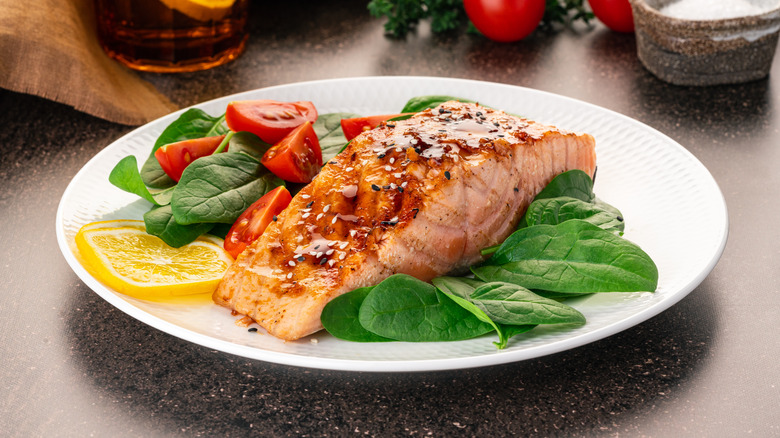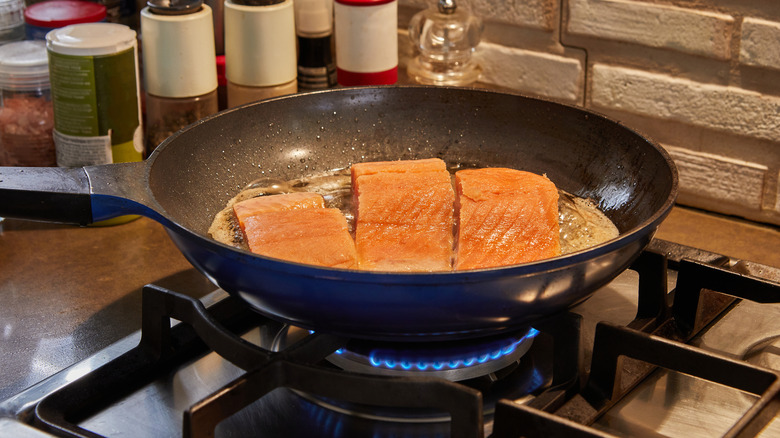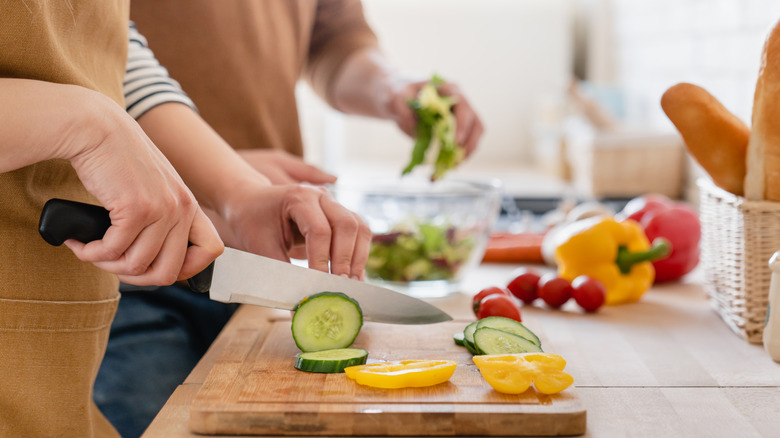What Exactly Is Unilateral Cooking?
French cuisine has a reputation for complicated recipes, rich ingredients, and advanced cooking techniques. In some cases, French cuisine can even be thought of as intimidating, both for diners and chefs. There's an air of exclusivity surrounding this culinary approach, which gives the impression that only highly trained and experienced chefs should try their hand at it.
While French cooking concepts are well-known all over the world, this wasn't always the case. In America, the cuisine was popularized by a very unlikely person, one who is now synonymous with French cooking. According to Magellan TV, Julia Child became aware of the cuisine upon moving to France with her husband, who was sent to the country to continue his work for the State Department. In addition to attending the prestigious Le Cordon Bleu, Child assisted with the development of a French cookbook aimed at American chefs. After much tweaking and revising of recipes by Child herself, the cookbook was finally published in 1961, with a career in television to follow soon after.
In addition to her boisterous personality and friendly demeanor, Child also excelled at making complex recipes easier to understand. However, one French cooking concept that's still popular today couldn't be simpler.
A fancy name for a simple concept
When preparing salmon, it's common to turn the fish over to ensure each side is cooked evenly. However, French chefs take a different approach to this healthy and flavorful protein, as illustrated by Culinary Ambition. "Salmon a l'unilateral," also known as unilateral cooking, is a surprising technique that entails cooking salmon on one side only. Upon setting the stove to low heat, the salmon steak is placed into a pan. The side touching the pan develops the perfect crisp texture, while the heat rising through the salmon renders the other side soft and tender.
Because dryness can be an issue when making salmon, unilateral cooking ensures it retains all its essential juices. You can enhance the end result even further by patting away excess moisture from the salmon steak before placing it into the hot pan and making sure it's at room temperature. Additionally, you'll get the best results by using fresh fish, as frozen salmon will likely have too much moisture. Along with this innovative technique, there are other French cooking methods you can experiment with.
French techniques that will ignite your love of cooking
MasterClass provides insight into other classic techniques arising out of the French culinary tradition. When working on meat preparations, braising entails placing a quickly seared piece of meat (such as chicken) in a pot filled with "seasoned liquid" or red wine. By cooking the meat in the liquid on low over the course of many hours, it becomes infused with all the rich flavors and seasonings within the pot. When it comes to fish, French chefs can also use en papillote, which means "in paper" when translated to English. In this case, the fish is placed inside a wrapping of parchment in a pan and is cooked by the steam that builds within the package.
Along with cooking techniques, French cuisine also calls for some skillful cutting action. To chiffonade leafy spinach or herbs means to cut it into pleasing shapes for use as a garnish. When preparing vegetables, the julienne technique renders them into uniform strips, which ensures they will cook evenly. These techniques not only boost the overall quality of recipes, but they can also make you feel like a bona fide French chef.


